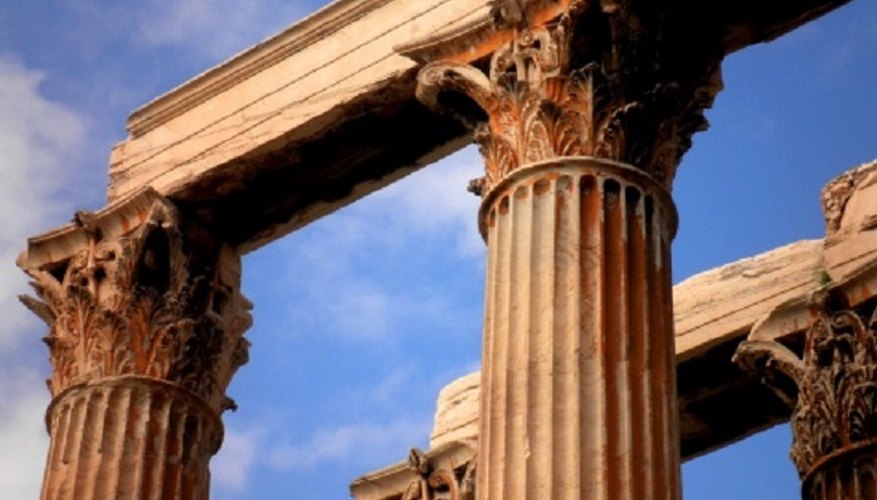Roman and Greek columns are a common architectural feature all over the world because of the prominence of the ideas and influence of ancient Rome and Greece. While the columns are often considered to be the same, they have differences.
Greek columns
The three styles of Greek architecture are Doric, Ionic and Corinthian. Doric columns are the oldest and plainest of the three styles, and they were common on the Greek mainland as well as in southern Italy and Sicily. The Ionic is a prettier column, with more grooves and a more slender shaft. Corinthian columns are perhaps the best known; they are elaborate structures that have plants and vines carved into the stone.
- The three styles of Greek architecture are Doric, Ionic and Corinthian.
- Doric columns are the oldest and plainest of the three styles, and they were common on the Greek mainland as well as in southern Italy and Sicily.
Roman columns
Five divisions make up Roman columns, which mimic the classical Greek columns. This copying, or borrowing, of styles is typical of the Romans because they absorbed culture and ideas from the Greeks when they conquered them. The five styles of Roman columns are Tuscan, Roman Ionic, Roman Doric, Roman Corinthian and Composite.
Differences
The differences between the types of columns are generally small and often have more to do with the type of structure they are used in rather than the actual columns. The Greeks often used columns for temples such as the Parthenon, while the Romans tended to use them in public buildings, including the Forum. Roman columns, while similar in appearance to Greek columns, show the influence of what were then new engineering discoveries. Roman Ionic columns are almost the same as their Greek counterparts but more elaborate. Greek columns also tend to have more fluting in the grooves carved into the stone. The Resources section includes links to photograph galleries on the different kinds of columns.
- The differences between the types of columns are generally small and often have more to do with the type of structure they are used in rather than the actual columns.
- Roman columns, while similar in appearance to Greek columns, show the influence of what were then new engineering discoveries.
